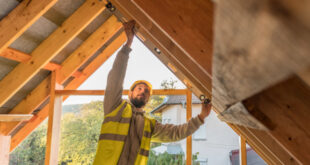Explore different types of houses for sale in the US for 2025! From single-family homes to condos & townhouses, find your perfect match. Start your search!
So, you’re thinking about buying a house? That’s a huge step, and honestly, it’s one of the most exciting journeys you can embark on! But before you dive headfirst into listings and open houses, it’s super important to get a handle on the sheer variety of homes out there. The U.S. housing market is diverse, and knowing the different types of houses for sale can save you time, stress, and ultimately help you find a place that truly feels like home.
As of May 2025, the landscape of available homes continues to evolve, and understanding your options is key. This guide will walk you through the most common types of houses you’ll encounter, from sprawling single-family residences to chic urban condos. We’ll break down the pros and cons, who they might be best for, and what makes each unique. Think of this as your first step to making a really informed decision. Ready to explore?
Table of Contents
Understanding Key Housing Classifications
Before we jump into specific styles, let’s quickly cover a couple of broad ways homes are categorized. This will help you narrow down your search filters later!
Attached vs. Detached This is pretty straightforward. A detached home stands on its own, without sharing any walls with another property. Think of your classic suburban house with its own yard. An attached home, on the other hand, shares one or more walls with neighboring units. Townhouses and condos are common examples.
New Construction vs. Resale You’ll also see homes listed as “new construction” or “resale.”
- New Construction: These are brand new homes, often customizable to some extent, and typically come with modern features and warranties.
- Resale: These are pre-owned homes that have had previous occupants. They often have more established landscaping and neighborhood character but might require updates.
Popular Types of Detached Houses for Sale
Detached homes offer privacy and often more space, making them a perennial favorite. Let’s look at some popular styles across the USA.
Single-Family Homes (The Classic Choice)
You probably pictured a single-family home when you first thought about buying. These are standalone structures built on their own parcel of land. They don’t share walls with any other dwelling.
- Pros: Maximum privacy, potential for yard space (front and back), freedom to customize and renovate (within local codes), often appreciate well.
- Cons: Generally more expensive, all maintenance and repair costs fall on the owner, can mean more yard work.
- Ideal For: Families needing space, individuals who value privacy and autonomy, pet owners, gardening enthusiasts.
You’ll find single-family homes in countless architectural styles, from cozy bungalows in established neighborhoods of cities like Austin, Texas, to sprawling ranch homes in suburban areas.
Ranch Style Homes (One-Level Living)
Ranch homes, also known as ramblers, are typically single-story houses with a long, low profile. They became super popular in the mid-20th century and are still highly sought after.
- Pros: No stairs make them accessible and great for all ages, easy maintenance, often have an open floor plan, good for indoor-outdoor living.
- Cons: Can have a larger footprint on the lot (meaning less yard for the same square footage as a two-story), less privacy between bedrooms and living areas compared to multi-story homes.
- Ideal For: Retirees, families with young children, individuals with mobility issues, anyone who dislikes stairs. Many communities in states like Florida and Arizona feature a high concentration of these accessible homes.
Colonial Homes (Timeless American Architecture)
Colonial-style architecture is a hallmark of American history, with roots going back to the 17th century. These homes are typically symmetrical, two or sometimes three stories, with a distinctive entryway and often a brick facade.
- Pros: Classic, enduring appeal, often feature a formal layout with distinct living and dining areas, bedrooms usually located upstairs for privacy.
- Cons: Can feel more formal or segmented than modern open-plan homes, older Colonials might require updates to plumbing and electrical systems.
- Ideal For: Those who appreciate traditional design, families who like a separation between living and sleeping areas, history buffs. You’ll see beautiful examples in New England states like Massachusetts and Virginia.
Modern & Contemporary Homes (Sleek & Stylish)
These terms are often used interchangeably, but there are subtle differences. Modern architecture typically refers to designs from the early to mid-20th century (think clean lines, minimalism), while Contemporary refers to today’s evolving styles, often incorporating sustainable materials and smart home technology. Both emphasize open spaces and lots of natural light.
- Pros: Open floor plans, large windows, often energy-efficient, can incorporate unique architectural features and cutting-edge technology.
- Cons: Unique designs might not appeal to all buyers (affecting resale), can sometimes feel stark or less cozy than traditional homes, high-end finishes can be expensive.
- Ideal For: Design-conscious buyers, those who love natural light and open spaces, tech enthusiasts. Cities known for architectural innovation, like Los Angeles or Seattle, often showcase stunning examples.
Tiny Homes (Minimalist Living)
The tiny home movement has gained serious traction! These are typically dwellings under 500 square feet, focusing on simplicity and efficiency. They can be stationary or on wheels.
- Pros: Significantly lower purchase price and utility costs, encourages a minimalist lifestyle, environmentally friendly, can offer mobility if built on a trailer.
- Cons: Very limited space (obviously!), zoning regulations and land acquisition can be tricky in some US locations, may not be suitable for families.
- Ideal For: Single individuals or couples embracing minimalism, those seeking a lower cost of living, environmentally conscious buyers.
Exploring Attached and Semi-Detached Housing Options
If a standalone house isn’t quite what you’re looking for, or if you’re eyeing urban areas or specific amenities, attached housing offers some great alternatives.
Townhouses (Vertical Living with Ownership)
A townhouse (or townhome) is an individually owned dwelling that shares one or more walls with adjacent properties, typically in a row. They often have multiple floors.
- Pros: More affordable than single-family homes in the same area, often come with small private outdoor spaces (patio or small yard), less exterior maintenance than a detached home, sense of community. Many are part of a Homeowners Association (HOA) that handles some upkeep.
- Cons: Shared walls mean less privacy than a detached home, HOA fees and rules can be restrictive, stairs can be a challenge for some.
- Ideal For: First-time homebuyers, small families, those who want some outdoor space without extensive upkeep, individuals looking for a community feel in areas like Chicago or Philadelphia.
Condominiums (Community Living with Amenities)
A condominium, or “condo,” is an individual unit within a larger building or community of buildings. You own your unit, but share ownership of common areas (hallways, pools, gyms) with other residents.
- Pros: Often the most affordable entry into homeownership, particularly in expensive urban centers like New York City or San Francisco; typically low maintenance (exterior and common areas handled by the Condo Owners Association – COA or HOA); access to amenities like pools, fitness centers, and security.
- Cons: Monthly COA/HOA fees can be substantial, less privacy due to shared walls/floors/ceilings, rules and restrictions set by the association, can be harder to sell in some markets than single-family homes.
- Ideal For: Young professionals, busy individuals, retirees wanting a low-maintenance lifestyle, those prioritizing amenities and location over space.
Duplexes, Triplexes, and Quadplexes (Multi-Family Investing Potential)
These are all types of multi-family homes. A duplex has two separate living units in one building, a triplex has three, and a quadplex has four. You can live in one unit and rent out the other(s).
- Pros: Potential for rental income to offset mortgage costs (“house hacking”), can be a good entry into real estate investing, separate living spaces can accommodate extended family.
- Cons: Being a landlord comes with responsibilities and potential headaches, shared property aspects might require agreements with other owners (if not solely owned), financing can sometimes be more complex than for a single-family home.
- Ideal For: Aspiring real estate investors, buyers looking to generate passive income, multi-generational families needing separate living quarters.
Specialized Housing Types to Consider
Beyond the common categories, there are other intriguing options that might fit your specific needs or dreams.
Manufactured Homes (Affordable & Flexible)
Previously often called mobile homes, modern manufactured homes are built entirely in a factory under federal building codes (HUD code) and then transported to a site. They can be placed on owned land or in land-lease communities.
- Pros: Generally more affordable than site-built homes, construction is quick and efficient in a controlled environment, modern designs offer good quality and features.
- Cons: Can depreciate in value more like vehicles than site-built homes (especially if on leased land), financing options can be more limited, some communities have strict rules.
- Ideal For: Budget-conscious buyers, those needing housing quickly, individuals looking for flexibility in location (if placed in a park).
Modular Homes (Customizable & Efficient)
Modular homes are also factory-built, but in sections (or modules). These modules are then transported to the building site and assembled on a permanent foundation. They must conform to all state and local building codes where they are sited, just like a traditional stick-built home.
- Pros: Highly customizable designs, faster construction time than traditional site-built homes, often more energy-efficient due to precise factory construction, can be more cost-effective.
- Cons: Financing can sometimes be a bit different than for standard homes, transportation costs for modules can add up depending on distance from the factory.
- Ideal For: Buyers wanting a custom home feel with potentially faster build times and cost savings, those in areas with shorter building seasons.
Luxury Estates & Mansions (High-End Living)
For those with a significant budget, the sky’s the limit. Luxury estates and mansions offer expansive square footage, premium finishes, custom architecture, and often extensive grounds with amenities like pools, tennis courts, and guesthouses.
- Pros: Ultimate comfort and prestige, high-end features and amenities, often in exclusive locations, potential for significant appreciation in strong luxury markets like Beverly Hills or The Hamptons.
- Cons: Extremely high purchase price and ongoing maintenance costs, property taxes can be substantial, smaller pool of potential buyers when it’s time to sell.
- Ideal For: High-net-worth individuals, those seeking exceptional privacy and amenities, buyers for whom budget is not a primary constraint.
Fixer-Uppers (Sweat Equity Opportunities)
A fixer-upper is a home that requires significant repairs or renovations. These homes are typically sold at a lower price, reflecting their condition.
- Pros: Potential to buy in a desirable neighborhood at a lower cost, opportunity to customize the home to your exact tastes, can build equity through renovations.
- Cons: Renovations can be costly, time-consuming, and stressful; unexpected problems are common; requires vision and often, DIY skills or a good contractor.
- Ideal For: Buyers with renovation experience or a willingness to learn, those on a tighter budget who are handy, investors looking to flip properties.
Eco-Friendly and Sustainable Homes (Green Living)
With growing environmental awareness, green homes are becoming increasingly popular. These are designed and built using sustainable materials and energy-efficient technologies.
- Pros: Lower utility bills (energy and water savings), healthier indoor air quality, reduced environmental impact, often incorporate durable and low-maintenance materials. Features might include solar panels, geothermal heating/cooling, rainwater harvesting, and non-toxic finishes.
- Cons: Can have a higher upfront cost (though often offset by long-term savings), may require specialized builders or contractors, some green technologies have a learning curve.
- Ideal For: Environmentally conscious buyers, those looking to reduce their carbon footprint and save on utility costs long-term.
Factors to Consider When Choosing a House Type
Whew! That’s a lot of options, right? Don’t worry, you don’t need to become an expert in all of them. The key is to figure out which factors are most important to you.
- Lifestyle Needs: Are you single, a couple, or a growing family? Do you work from home? Do you entertain often? Your daily life and future plans heavily influence the type and size of home you’ll need.
- Budget and Financing: This is a big one. Your down payment, mortgage pre-approval amount, and ongoing monthly costs (including property taxes, insurance, and potential HOA fees) will narrow down your choices significantly.
- Maintenance Responsibilities: Are you a DIY guru who enjoys yard work and home repairs, or would you prefer minimal upkeep? A single-family home demands more personal maintenance than a condo.
- Long-Term Goals: Is this a starter home, a forever home, or an investment property? Your long-term financial and personal goals should play a role in your decision.
- Location and Neighborhood Preferences: Do you crave urban energy or suburban tranquility? Proximity to work, schools, amenities, and green spaces will also guide your choice, as certain home types are more prevalent in specific areas.
Navigating the US Housing Market in 2025
As we move through 2025, the U.S. housing market continues to present both opportunities and challenges. You might find inventory levels varying by region, and interest rates, while always a factor, are just one piece of the puzzle. It’s essential to stay informed about your local market conditions.
This is where having a knowledgeable guide comes in handy. When you’re ready to explore these options further and navigate the local market, partnering with experienced professionals can make all the difference. For instance, seeking expert real estate guidance from Nexmove.us can provide valuable assistance in finding the perfect home type for your needs in your desired US location. They can help you understand current trends and connect you with properties that match your criteria.
Frequently Asked Questions
Let’s tackle some common questions homebuyers have about different house types:
What’s the most popular type of house in the US? Single-family detached homes remain the most popular and common type of housing in the United States, prized for their privacy and space.
What’s the difference between a condo and a townhouse? The main difference lies in ownership structure and often physical layout. With a condo, you own the interior of your unit and share ownership of common areas and the building structure. With a townhouse, you typically own the interior and exterior of your unit, including the land it sits on, and may share one or more walls with neighbors. Townhouses often feel more like individual houses, sometimes with small private yards.
Are modular homes a good investment? Modular homes built to local codes and placed on a permanent foundation generally appreciate in value similarly to site-built homes. Their quality, efficiency, and customizability make them an increasingly attractive option.
What should a first-time homebuyer look for? First-time homebuyers should prioritize affordability, a manageable level of maintenance, and a location that suits their lifestyle and commute. Townhouses, smaller single-family homes, and condos are often popular choices. It’s also crucial to get pre-approved for a mortgage early in the process.
How does an HOA work? A Homeowners Association (HOA) or Condo Owners Association (COA) is an organization in a subdivision, planned community, or condominium building that makes and enforces rules for the properties and their residents. They collect monthly or annual fees to pay for the upkeep of common areas (like landscaping, pools, elevators) and other shared services. It’s vital to review HOA rules and financials before buying.
Conclusion
Choosing the right type of house is a deeply personal decision, and as you can see, there’s a wide array of options available across the United States in 2025. From the classic appeal of a single-family home to the low-maintenance lifestyle of a condo, or the investment potential of a multi-family unit, your perfect match is out there.
The key is to align your choice with your current lifestyle, budget, and future aspirations. Take your time, do your research, and don’t be afraid to explore different neighborhoods and styles. When you’re ready to take the next step, or if you have more questions, the team at Nexmove.us can be a great resource.
 NexMove Home & Investment Guide Find Your Perfect Property, Invest Wisely.
NexMove Home & Investment Guide Find Your Perfect Property, Invest Wisely.




